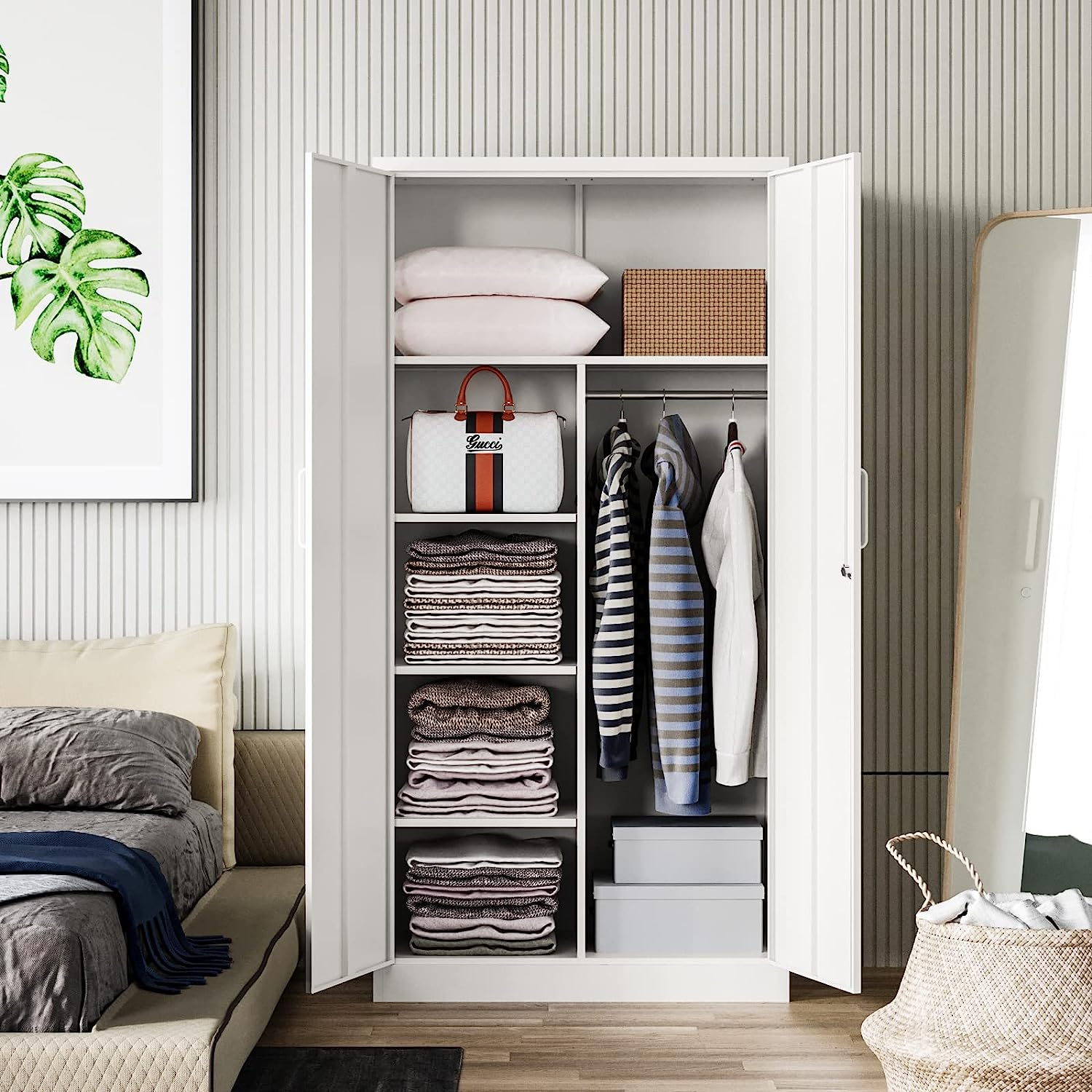

Articles
How To Build A Wardrobe
Modified: January 19, 2024
Discover the secrets of building a stylish and functional wardrobe with our wide range of bedroom furniture. Transform your space into a cozy sanctuary with our top-quality pieces.
(Many of the links in this article redirect to a specific reviewed product. Your purchase of these products through affiliate links helps to generate commission for Storables.com, at no extra cost. Learn more)
Introduction
Building a wardrobe that reflects your personal style and meets your daily needs can seem like a daunting task. With countless clothing options available, it’s easy to feel overwhelmed and unsure of where to begin. However, with a little planning and organization, you can create a wardrobe that is both functional and fashionable.
In this guide, we will walk you through the steps to build a wardrobe that suits your lifestyle and expresses your unique personality. From assessing your needs and decluttering your current wardrobe to defining your wardrobe essentials and incorporating trendy pieces, we will cover all aspects of wardrobe building.
Whether you’re starting from scratch or looking to revamp your current collection, this article will provide you with the guidance and inspiration you need to build a wardrobe that makes you look and feel confident in any situation.
So, let’s dive in and begin the journey of building your dream wardrobe!
Key Takeaways:
- Assess your needs and personal style to build a wardrobe that aligns with your lifestyle and fashion preferences. Declutter, define essentials, and invest in high-quality basics for a timeless and functional collection.
- Incorporate trendy pieces, choose versatile clothing items, and personalize with accessories to add flair and flexibility to your wardrobe. Regularly maintain and update your collection to reflect your evolving style and lifestyle needs.
Read more: How To Build A Wardrobe Closet
Step 1: Assess Your Needs and Personal Style
Before diving into the world of wardrobe building, it’s important to take some time to assess your needs and understand your personal style. This step will help you identify what clothing items are essential for your lifestyle and what types of outfits make you feel your best.
Start by evaluating your daily activities and the occasions you typically dress for. Are you a working professional who needs a wardrobe suited for business meetings and formal events? Or perhaps you’re a stay-at-home parent who requires comfortable and practical clothing for running errands and taking care of your family.
Consider the climate of your region as well, as this will influence the types of clothing you need. If you live in a warmer climate, lightweight fabrics and breathable materials may be more suitable. On the other hand, if you experience colder winters, you’ll want to invest in cozy sweaters, jackets, and warm accessories.
Once you have a clear idea of your needs, it’s time to delve into your personal style. Look through fashion magazines, browse online fashion blogs, and save images of outfits that resonate with you. Pay attention to colors, patterns, and silhouettes that catch your eye.
Take note of what makes you feel confident and comfortable when you wear it. Are you drawn to classic and timeless pieces, or do you enjoy experimenting with the latest trends? Do you prefer a minimalistic and understated style, or are you more inclined towards bold and vibrant patterns?
Remember, your personal style is unique to you, and there are no right or wrong choices. The key is to be true to yourself and select clothing that reflects your personality.
By assessing your needs and defining your personal style, you will have a solid foundation for building a wardrobe that perfectly aligns with who you are and the activities you engage in. So take the time to reflect on your lifestyle and fashion preferences before proceeding to the next step of the wardrobe building process.
Step 2: Declutter Your Current Wardrobe
Now that you have assessed your needs and personal style, it’s time to declutter your current wardrobe. This step is crucial in order to create space for new pieces and ensure that you are left with a collection of clothing that you truly love and wear regularly.
Start by taking everything out of your closet and laying it on your bed or a clean surface. This will allow you to see all of your clothing items at once and make the decluttering process more efficient. As you go through each item, ask yourself the following questions:
- Have I worn this item in the past year?
- Does it still fit me well?
- Is it in good condition?
- Do I feel confident and comfortable when wearing it?
Be honest with yourself and let go of any clothing that no longer serves a purpose in your wardrobe. Items that are damaged, no longer fit, or simply don’t align with your current style should be set aside for donation, resale, or recycling. Keeping a clutter-free wardrobe will make it easier to find and style outfits, making getting dressed a more enjoyable experience.
Once you have decluttered your wardrobe, it’s time to organize what’s left. Group similar items together, such as tops, bottoms, dresses, and outerwear. Within each category, arrange your clothing by color or style, whichever works best for you. This will make it easier to see what you have and create outfits effortlessly.
If space permits, consider investing in organizational tools such as hanging organizers, fabric bins, or drawer dividers. These can help maximize your storage capacity and keep your wardrobe neat and tidy.
Remember, the goal of decluttering is to prioritize quality over quantity. Having fewer, but well-chosen and versatile pieces will make it easier to mix and match and create a variety of stylish outfits.
With a refreshed and organized wardrobe, you’re now ready to move on to the next steps of building your dream collection of clothing. Stay tuned for the next step: defining your wardrobe essentials!
Step 3: Define Your Wardrobe Essentials
Defining your wardrobe essentials is a crucial step in building a versatile and functional collection of clothing. These are the key pieces that form the foundation of your wardrobe and can be mixed and matched to create a variety of outfits for different occasions.
When determining your wardrobe essentials, think about your lifestyle and the activities you engage in most frequently. These essentials will vary depending on factors such as your profession, climate, and personal style. However, there are a few classic wardrobe staples that are timeless and can work for almost anyone:
- 1. Little Black Dress (LBD): A well-fitted black dress is a must-have for any wardrobe. It can be dressed up or down and is suitable for a variety of occasions, from cocktail parties to formal events.
- 2. White Button-Down Shirt: A tailored white shirt is a versatile piece that can be paired with jeans for a casual look or worn with dress pants or a skirt for a professional setting.
- 3. Dark Wash Jeans: Opt for a pair of dark wash jeans that flatter your body shape. These can be dressed up with a blouse and heels or dressed down with a t-shirt and sneakers.
- 4. Blazer: A well-tailored blazer instantly elevates any outfit. Choose a neutral color like black or navy that can be easily paired with various tops and bottoms.
- 5. White T-Shirt: A classic white t-shirt is a versatile piece that can be worn on its own or layered under blouses, sweaters, or jackets.
- 6. Tailored Trousers: Invest in a pair of tailored trousers that fit you well and flatter your body shape. This piece is perfect for formal or business settings.
- 7. Versatile Outerwear: Depending on the climate you live in, invest in a versatile outerwear piece such as a trench coat, leather jacket, or a wool coat. Choose a style that matches your personal style and can be layered over different outfits.
- 8. Comfortable Shoes: Having a few pairs of comfortable yet stylish shoes is essential. Opt for neutral colors like black or nude that can be worn with a variety of outfits.
These are just a few examples of wardrobe essentials, and your list may vary based on your preferences. Consider your lifestyle, personal style, and the activities you frequently engage in to determine the essentials that are most relevant to you.
By having a selection of well-chosen wardrobe essentials, you will always have a solid base to build your outfits upon. These items can easily be mixed and matched with trendier pieces to create a variety of looks that suit your style and needs.
In the next step, we will explore how to incorporate trendy pieces into your wardrobe to add a touch of current fashion to your timeless essentials. Stay tuned!
Step 4: Invest in High-Quality Basics
Building a wardrobe that stands the test of time starts with investing in high-quality basics. These are the foundation pieces that form the backbone of your outfits and should be made to last. While it may be tempting to opt for cheaper options, investing in well-made basics will save you money in the long run and ensure that your wardrobe remains timeless and stylish.
When selecting high-quality basics, pay attention to the material and construction of the garments. Look for natural fibers like cotton, linen, silk, and wool, as these tend to be more durable and breathable. Check the stitching and seams to ensure that they are well-made and sturdy.
Here are a few high-quality basics worth investing in:
- 1. Crisp White Shirt: A classic white shirt made from high-quality cotton or silk is a versatile staple that can be dressed up or down for various occasions.
- 2. Tailored Blazers: Invest in a well-fitting blazer made from quality fabric that will elevate any outfit and add a polished touch.
- 3. Perfect-Fit Jeans: Look for jeans made from premium denim that fits you well and flatters your body shape. They will last longer and maintain their shape better than cheaper alternatives.
- 4. Timeless Dresses: Choose dresses in classic silhouettes and high-quality fabrics that can be worn for multiple seasons and occasions.
- 5. Cashmere Sweaters: Indulge in a few luxurious cashmere sweaters that will keep you warm and stylish during colder months.
- 6. Leather Accessories: Invest in high-quality leather accessories like belts, bags, and shoes that will age beautifully and become stylish staples in your wardrobe.
Remember, the key is to focus on quality rather than quantity. Investing in a few well-made basics that fit you perfectly will give you a timeless and effortlessly stylish look. These pieces can be mixed and matched with other items to create endless outfit possibilities.
Additionally, taking care of your high-quality basics is essential to ensure their longevity. Read and follow the care instructions provided and handle them with care when washing, drying, and storing. This will extend their lifespan and keep them looking their best.
With your high-quality basics in place, you can now move on to the next step of building your wardrobe: incorporating trendy pieces. This will add a touch of current fashion and personality to your timeless foundation. Let’s explore how to do that in the next step!
Read more: How To Build A Wardrobe For Men
Step 5: Incorporate Trendy Pieces
While high-quality basics form the foundation of your wardrobe, incorporating trendy pieces allows you to stay current and express your personal style. Trends come and go, so it’s important to approach them with a discerning eye and select pieces that truly resonate with you.
When incorporating trendy pieces, start by researching current fashion trends through magazines, fashion blogs, or social media platforms. Pay attention to colors, patterns, and styles that catch your interest. However, remember that not all trends will suit your body shape or personal style, so be selective in your choices.
Here are a few tips for incorporating trendy pieces into your wardrobe:
- 1. Statement Accessories: Accessorize your outfits with statement pieces like oversized sunglasses, bold earrings, or chunky necklaces. These can instantly elevate a simple outfit and add a touch of personality.
- 2. Prints and Patterns: Experiment with prints and patterns that are currently in vogue. Whether it’s animal prints, floral designs, or geometric patterns, choose pieces that complement your style and can be mixed and matched with your existing wardrobe.
- 3. Color Trends: Stay updated on color trends for each season and incorporate them into your outfits. This can be done through clothing items, accessories, or even makeup choices.
- 4. Silhouette Updates: Try out new silhouettes that are in style. For example, if wide-leg trousers are trendy, opt for a well-fitting pair that flatters your figure.
- 5. Layering: Experiment with layering different pieces to create unique and fashion-forward looks. Mix textures, lengths, and styles to add depth and interest to your outfits.
Remember, the key to successfully incorporating trendy pieces is to balance them with timeless basics. Choose one or two trendy items per season and mix them with your high-quality staples for a balanced and stylish look.
Keep in mind that trends are not meant to dictate your style but rather enhance it. Don’t be afraid to adapt trends to suit your personal preferences and make them work for you. Fashion is all about self-expression, so have fun with it!
In the next step, we will discuss how to choose versatile clothing items that offer multiple outfit possibilities. Stay tuned!
Invest in versatile, timeless pieces like a tailored blazer, classic white shirt, and well-fitting jeans. These items can be mixed and matched to create a variety of stylish looks for any occasion.
Step 6: Choose Versatile Clothing Items
Building a versatile wardrobe is all about selecting clothing items that can be mixed and matched to create a variety of stylish outfits. Versatile pieces offer flexibility and allow you to maximize your wardrobe’s potential, making it easier to dress for different occasions without a lot of effort.
Here are some tips for choosing versatile clothing items:
- 1. Neutral Colors: Opt for pieces in neutral shades like black, white, navy, gray, or beige. These colors are timeless and can be easily paired with a wide range of other colors, creating endless outfit possibilities.
- 2. Classic Silhouettes: Choose clothing items with classic silhouettes that transcend trends. A tailored blazer, a simple shift dress, a tailored pair of trousers—these pieces can be worn in various ways and are suitable for different occasions.
- 3. Layering Pieces: Invest in layering pieces that can be worn under or over other garments. This includes camisoles, cardigans, lightweight sweaters, and lightweight jackets. They allow you to create multiple looks by adding or removing them as needed.
- 4. Mix and Match Separates: Build a collection of mix and match separates such as skirts, pants, blouses, and tops. Choose items that can be easily paired together to create different outfits. For example, a black skirt can be paired with different blouses or tops to create various looks.
- 5. Convertible or Reversible Items: Look for clothing items that are convertible or reversible, providing you with multiple ways to wear them. For example, a reversible dress that can be worn with the V-neck or the scoop neck in the front, or a convertible cardigan that can be worn in different ways.
By carefully selecting versatile clothing items, you will be able to maximize the number of outfits you can create from your wardrobe. This will save you time and energy when getting dressed while still allowing you to maintain a stylish and fresh look.
Remember, versatility doesn’t mean sacrificing style. Look for items that make you feel confident and reflect your personal style. By choosing versatile pieces that align with your tastes, you can create a wardrobe that truly represents you.
In the next step, we will discuss how to organize your wardrobe space to ensure ease of use and maintain its functionality. Stay tuned for more!
Step 7: Organize Your Wardrobe Space
An organized wardrobe space is essential for maintaining a functional and efficient wardrobe. When your clothing items and accessories are well-organized, it becomes easier to find what you need, create outfits, and keep track of your inventory. Here are some tips to help you organize your wardrobe space:
- 1. Clear Out Clutter: Start by decluttering your wardrobe and getting rid of items that no longer serve a purpose. Donate or sell items that you haven’t worn in a long time or that don’t align with your personal style anymore.
- 2. Categorize: Sort your clothing and accessories into categories such as tops, bottoms, dresses, outerwear, shoes, and accessories. This will make it easier to locate specific items when you need them.
- 3. Utilize Storage Solutions: Invest in storage solutions that maximize space utilization. This can include hanging organizers, fabric bins, shoe racks, drawer dividers, and shelf dividers. Use these tools to keep everything in its designated place and make the most of your wardrobe space.
- 4. Arrange by Color or Style: Arrange your clothing items within each category by color or style. This will create a visually appealing and organized display, making it easier to put together outfits effortlessly.
- 5. Display Favorites: Keep your favorite and frequently worn items within easy reach. This way, you won’t have to dig through your wardrobe every time you want to wear them, saving you time and effort.
- 6. Rotate Seasonal Items: If you have limited wardrobe space, consider rotating your seasonal items. Store off-season clothing in vacuum-sealed bags or storage boxes to create more room for the current season’s pieces.
- 7. Maintain Regularly: Set aside time regularly to assess and organize your wardrobe. This will help you keep track of what you have, identify items that need repair or replacement, and prevent your wardrobe from becoming cluttered again.
By implementing these organization tips, you will be able to create a more functional and visually appealing wardrobe space. This will not only make it easier to get dressed in the morning but also ensure that your clothing items are well-cared for and can be enjoyed for a longer period of time.
In the next step, we will discuss how to personalize your wardrobe with accessories, adding the finishing touches to your outfits. Stay tuned!
Step 8: Personalize Your Wardrobe with Accessories
Accessories are the finishing touches that can elevate and personalize your outfits. They have the ability to transform a simple look into a stylish ensemble and showcase your unique personality. Adding the right accessories to your wardrobe can breathe new life into your existing clothing items. Here’s how to personalize your wardrobe with accessories:
- 1. Statement Jewelry: Incorporate statement jewelry pieces to add a bold and eye-catching element to your outfits. Opt for chunky necklaces, oversized earrings, or stackable bracelets to make a statement.
- 2. Scarves and Shawls: Scarves and shawls are versatile accessories that can instantly add color, pattern, and texture to your look. They can be worn in various ways, such as draped over the shoulders, tied around the neck, or even used as a belt.
- 3. Belts: A belt can define your waist, add structure to oversized garments, or simply enhance your outfit. Experiment with different belt styles, such as statement buckles or colorful leather belts, to add a touch of personality.
- 4. Hats: Hats not only serve as a stylish accessory but also provide protection from the sun. Whether it’s a wide-brimmed straw hat for summer or a felt fedora for fall, find a hat style that suits your personal taste and complements your outfits.
- 5. Bags: Invest in a selection of high-quality bags that suit different occasions and outfits. Choose classic styles like a tote, crossbody, or clutch in neutral colors that can be paired with a wide range of clothing.
- 6. Watches: A watch is not only a practical accessory but also a stylish one. Look for a watch that matches your personal style and can be worn with both casual and formal outfits.
- 7. Sunglasses: A fashionable pair of sunglasses is a must-have accessory that not only protects your eyes from the sun but also adds a touch of glamour to your looks. Choose a style that complements your face shape and matches your personal style.
Remember, accessories should be chosen strategically to enhance your outfits. Pay attention to the colors, patterns, and textures of your accessories to ensure they complement your clothing. Experiment with different combinations to find what works best for you.
Additionally, don’t be afraid to mix and match your accessories. Combining different pieces can create unique and personalized looks that reflect your individual style. Have fun with your accessories and use them as a way to express yourself!
In the final step, we will discuss how to build a collection of shoes that complements your wardrobe. Stay tuned!
Read more: How To Build Built In Wardrobe
Step 9: Build a Collection of Shoes
Shoes are not only a practical necessity but also a key fashion accessory that can complete your outfits and elevate your overall look. Building a collection of versatile and stylish shoes allows you to create a variety of different looks while ensuring that you have footwear suitable for every occasion. Here’s how to build a well-rounded shoe collection:
- 1. Comfortable Everyday Shoes: Start with a pair of comfortable shoes that you can wear for everyday activities. This can be a pair of stylish sneakers, ballet flats, or loafers that provide both style and comfort.
- 2. Classic Pumps or Heels: Invest in a pair of classic pumps or heels that can be worn for dressier occasions or in a professional setting. Opt for a versatile color like black or nude that can be easily paired with different outfits.
- 3. Versatile Flats: Include a few pairs of versatile flats in your collection. Choose a variety of colors and styles such as pointed flats, ballet flats, or sandals to suit different outfits and seasons.
- 4. Ankle Boots: Ankle boots are a versatile footwear option that can be worn throughout the year. Look for a pair in a neutral color with a comfortable heel height that can be dressed up or down.
- 5. Statement Shoes: Add a pair of standout shoes to your collection that can add a pop of color, texture, or pattern to your outfits. Whether it’s a bold-colored pair of heels or patterned boots, statement shoes can make a stylish impact.
- 6. Casual Sandals or Flip-flops: Include a pair of casual sandals or flip-flops for relaxed summer days or beach outings. Look for comfortable and durable designs that match your personal style.
- 7. Athletic Shoes: If you engage in sports or workout regularly, invest in a pair of good-quality athletic shoes that provide the necessary support and comfort for your activities.
When building your shoe collection, opt for versatile designs that can be paired with a variety of outfits. Consider your lifestyle, the climate of your region, as well as your personal style preferences to ensure you have shoes that meet your needs.
Remember to take care of your shoes by cleaning and storing them properly. Regular maintenance will ensure that they last longer and continue to look their best.
With a well-curated shoe collection, you will always have the right footwear for any occasion, allowing you to confidently put together stylish and appropriate outfits.
In the final step, we will discuss how to maintain and update your wardrobe to keep it current and functional. Stay tuned for the last step!
Step 10: Maintain and Update Your Wardrobe
Building a wardrobe is an ongoing process, and it’s important to maintain and update it regularly to keep it current, functional, and reflective of your personal style. Here are some tips for maintaining and updating your wardrobe:
- 1. Regular Closet Assessment: Set aside time every few months to go through your wardrobe and assess what you have. This will help you identify items that no longer fit, are worn out, or no longer align with your style. Donate or sell these items to make room for new additions.
- 2. Follow Fashion Trends: Stay updated on current fashion trends to refresh your wardrobe with new and exciting pieces. However, choose trends that resonate with your personal style and enhance your existing collection.
- 3. Invest in Quality: When purchasing new items, prioritize quality over quantity. Investing in well-made, durable pieces ensures that they will stand the test of time and maintain their style and functionality.
- 4. Mix and Match: Experiment with different combinations and mix your existing pieces to create new outfits. Often, you can create a completely fresh look just by styling items differently or layering them in unexpected ways.
- 5. Consider Seasonal Updates: As the seasons change, assess your wardrobe and make updates accordingly. Put away bulky winter clothing during warmer months and bring out lightweight and breathable pieces.
- 6. Accessory Revamp: Accessories play a crucial role in keeping your outfits fresh and updated. Regularly add new accessories, such as belts, scarves, or jewelry, to breathe new life into your existing clothing items.
- 7. Tailoring and Repairs: Don’t forget to take care of your clothing by getting items tailored to ensure the perfect fit and repairing any damages promptly. This will extend the lifespan of your garments and keep them looking their best.
- 8. Embrace Your Style Evolution: Your personal style may change and evolve over time, and that’s perfectly normal. Embrace your style journey and allow your wardrobe to evolve with you. Let go of items that no longer spark joy and embrace new items that align with your current preferences.
Remember that building a wardrobe is a continuous process, and it’s important to be mindful and intentional about the items you bring into it. Assessing, maintaining, and updating your wardrobe regularly will ensure that it remains functional, stylish, and reflective of your unique personality.
Celebrate your sense of style and enjoy the process of curating a wardrobe that truly represents you and makes you feel confident and comfortable in every outfit.
Congratulations on completing all ten steps! Now, go forth and confidently embrace your well-built and personalized wardrobe!
Conclusion
Building a wardrobe that reflects your personal style, meets your needs, and is versatile and functional is no small feat. However, with careful planning, organization, and a sense of self-expression, you can create a collection of clothing that makes you feel confident and stylish every day.
Throughout this guide, we have walked you through ten essential steps to build your dream wardrobe. From assessing your needs and personal style to decluttering, defining essentials, investing in high-quality basics, and incorporating trendy pieces, we’ve covered all the necessary foundations. We’ve also talked about the importance of choosing versatile pieces, organizing your wardrobe space, personalizing with accessories, building a collection of shoes, and maintaining and updating your wardrobe regularly.
Remember, building a wardrobe is an ongoing process. It’s important to regularly assess and update your collection to reflect your evolving style and lifestyle needs. Embrace your individuality and don’t be afraid to experiment with different styles, trends, and combinations. Your wardrobe should be a reflection of your unique personality and make you feel empowered and confident.
Lastly, building a wardrobe should be enjoyable. Have fun exploring fashion, discovering new styles, and expressing your creativity. Use this guide as a starting point, but ultimately, let your personal preferences and instincts guide you in creating a wardrobe that truly represents who you are.
With these tips and steps in mind, you are well-equipped to embark on the journey of building a wardrobe that not only reflects your personal style but also serves your lifestyle needs. Stay true to yourself, be open to trying new things, and enjoy the process of curating a wardrobe that makes getting dressed a joyous and empowering experience.
Frequently Asked Questions about How To Build A Wardrobe
Was this page helpful?
At Storables.com, we guarantee accurate and reliable information. Our content, validated by Expert Board Contributors, is crafted following stringent Editorial Policies. We're committed to providing you with well-researched, expert-backed insights for all your informational needs.
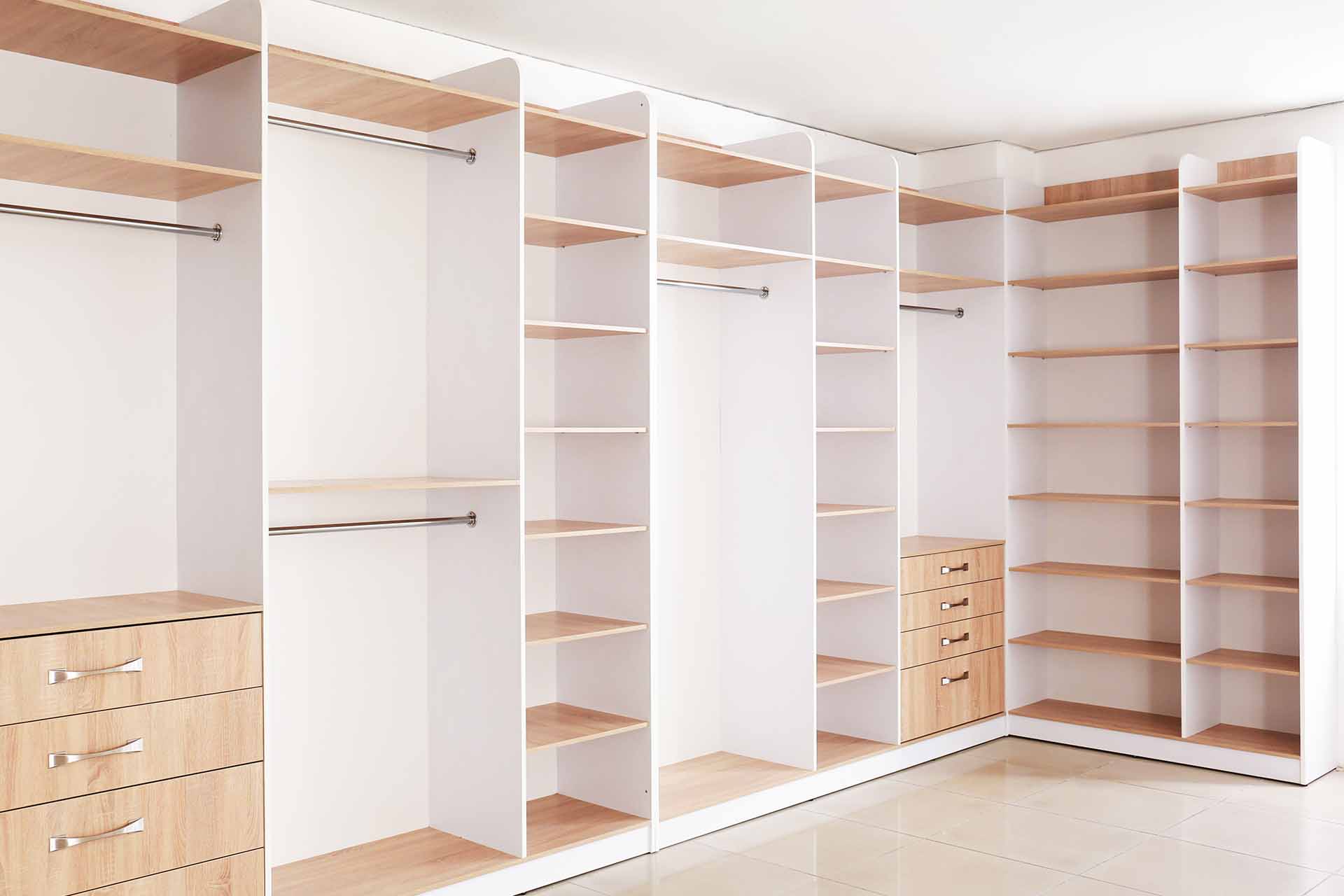
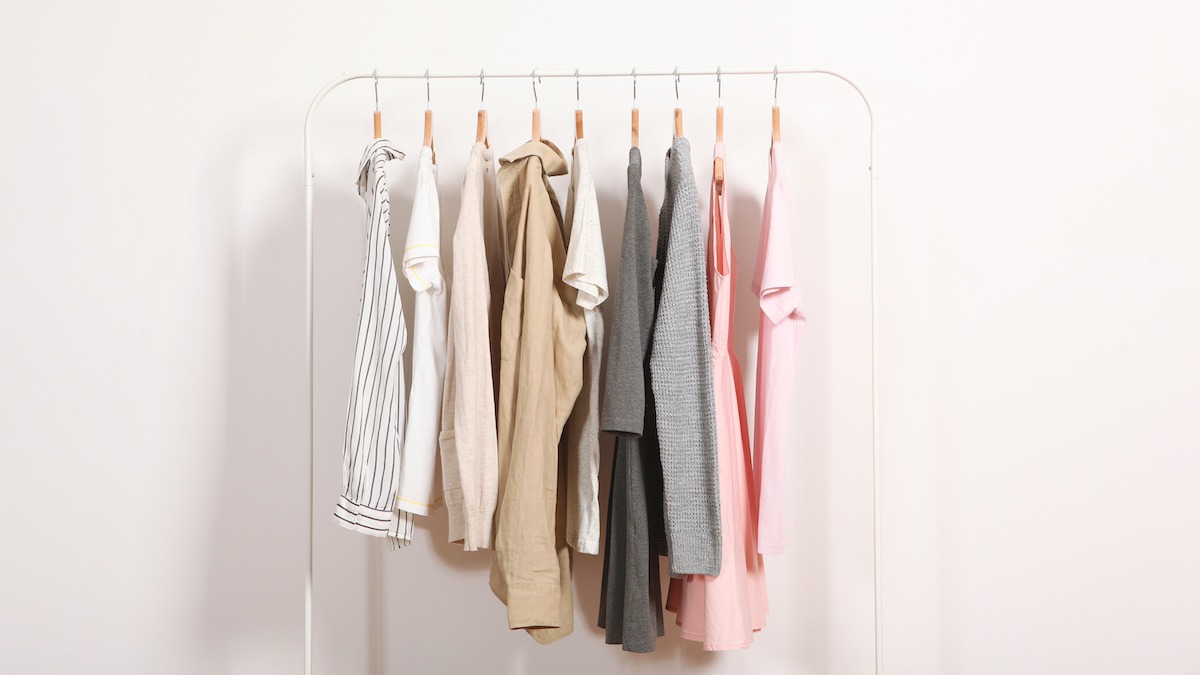
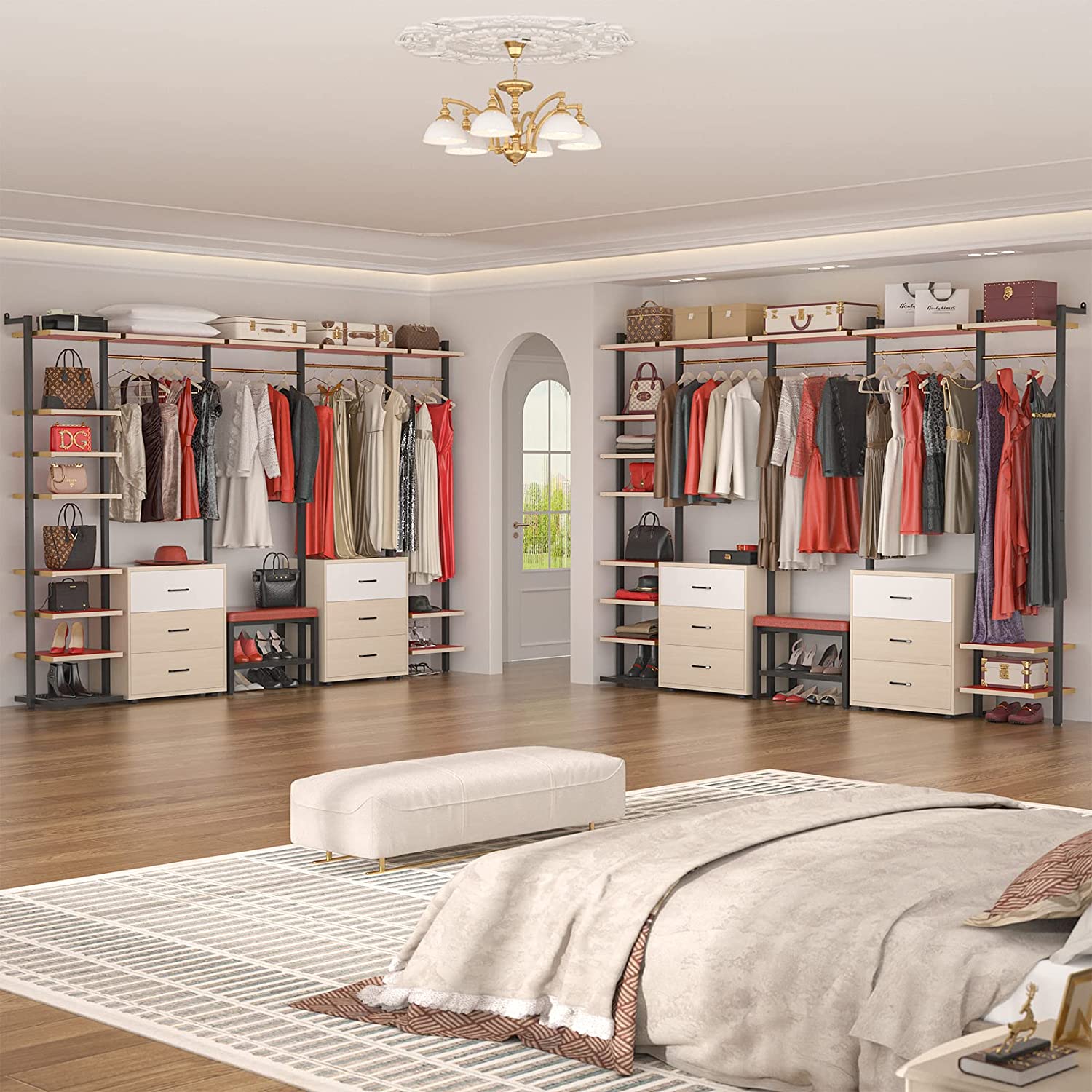
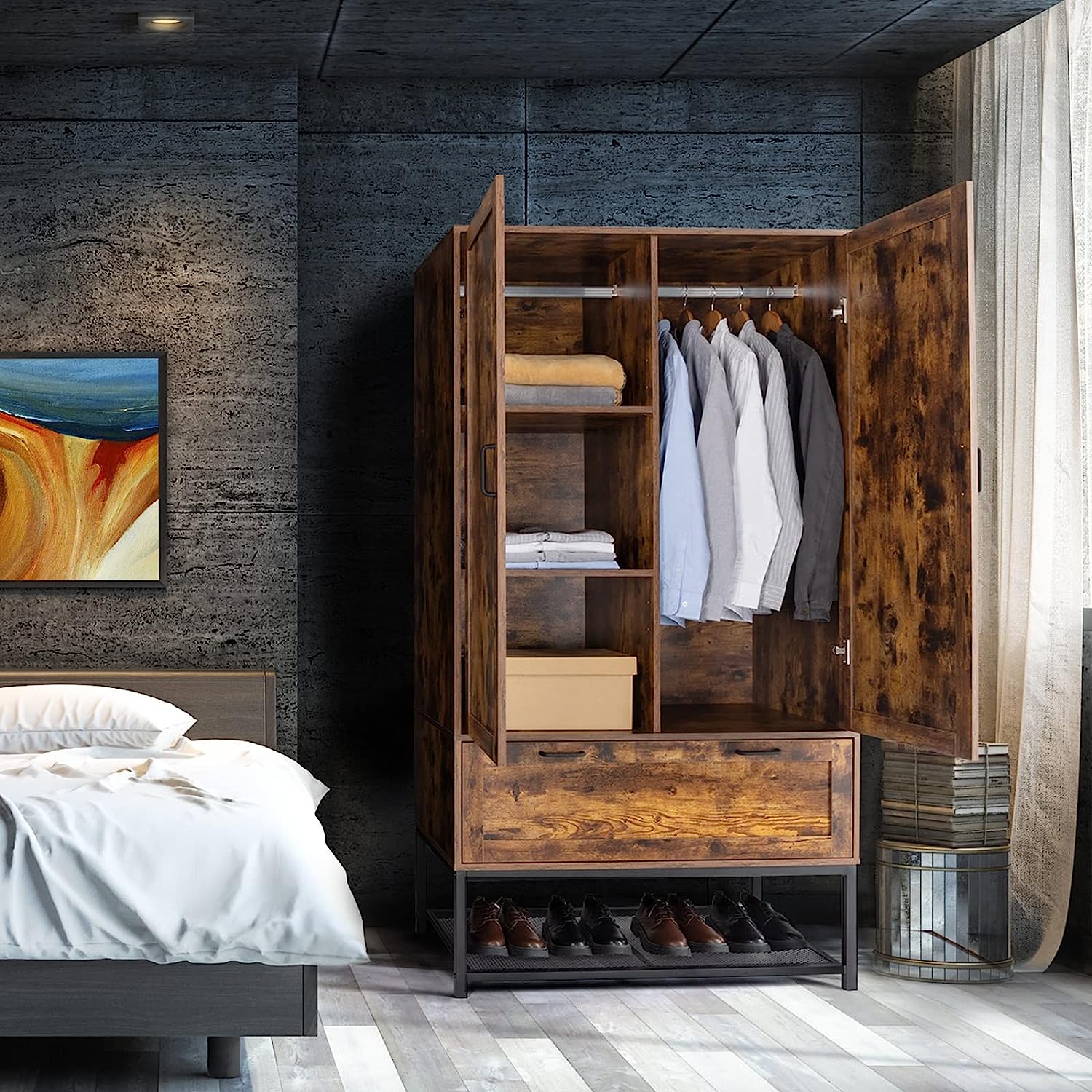

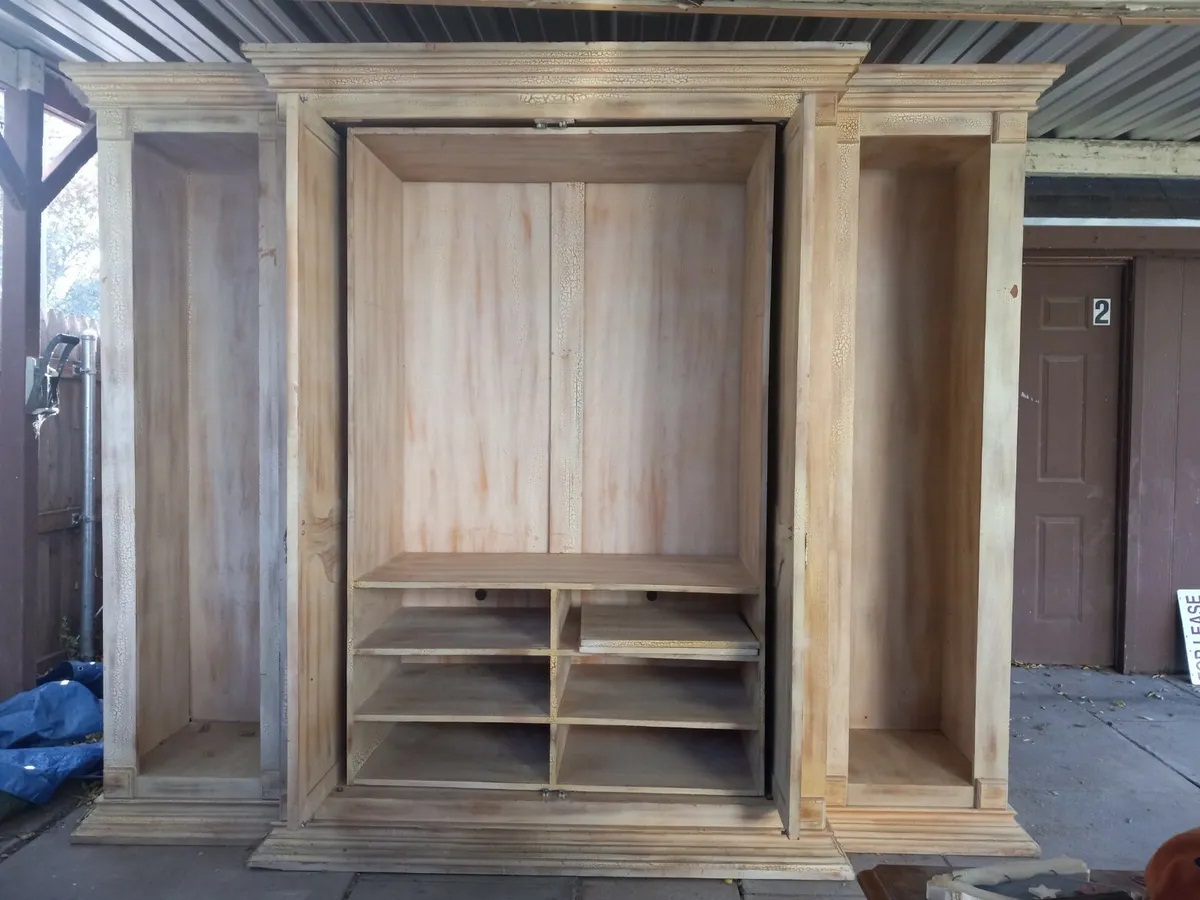
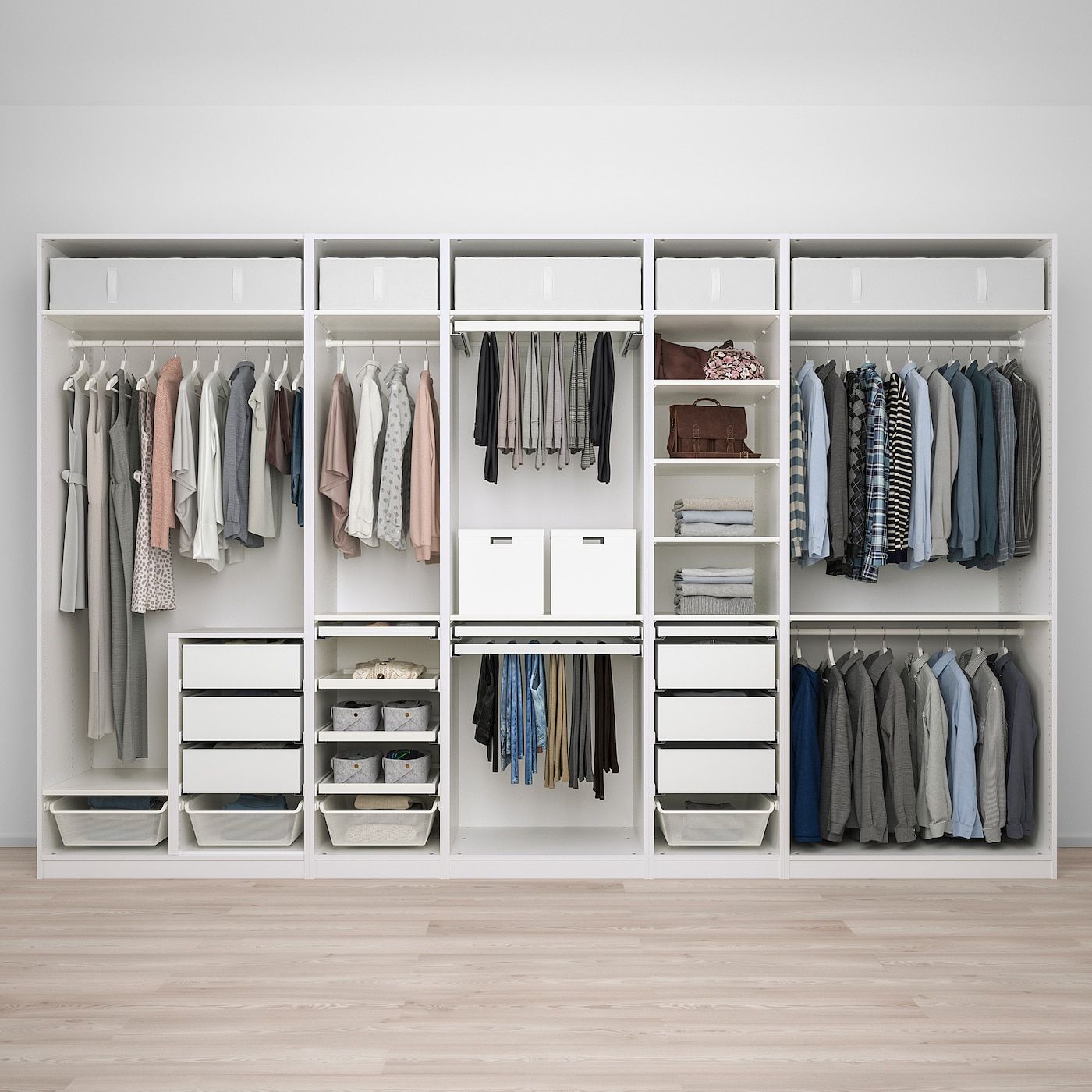
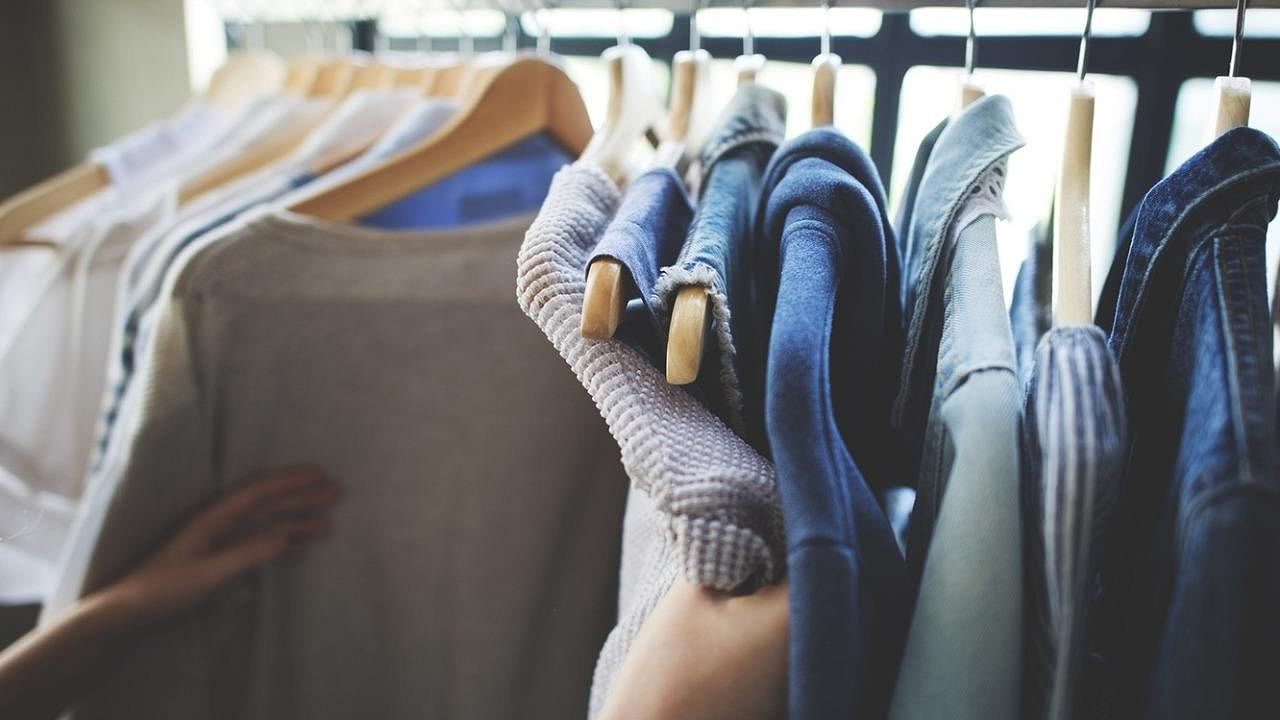
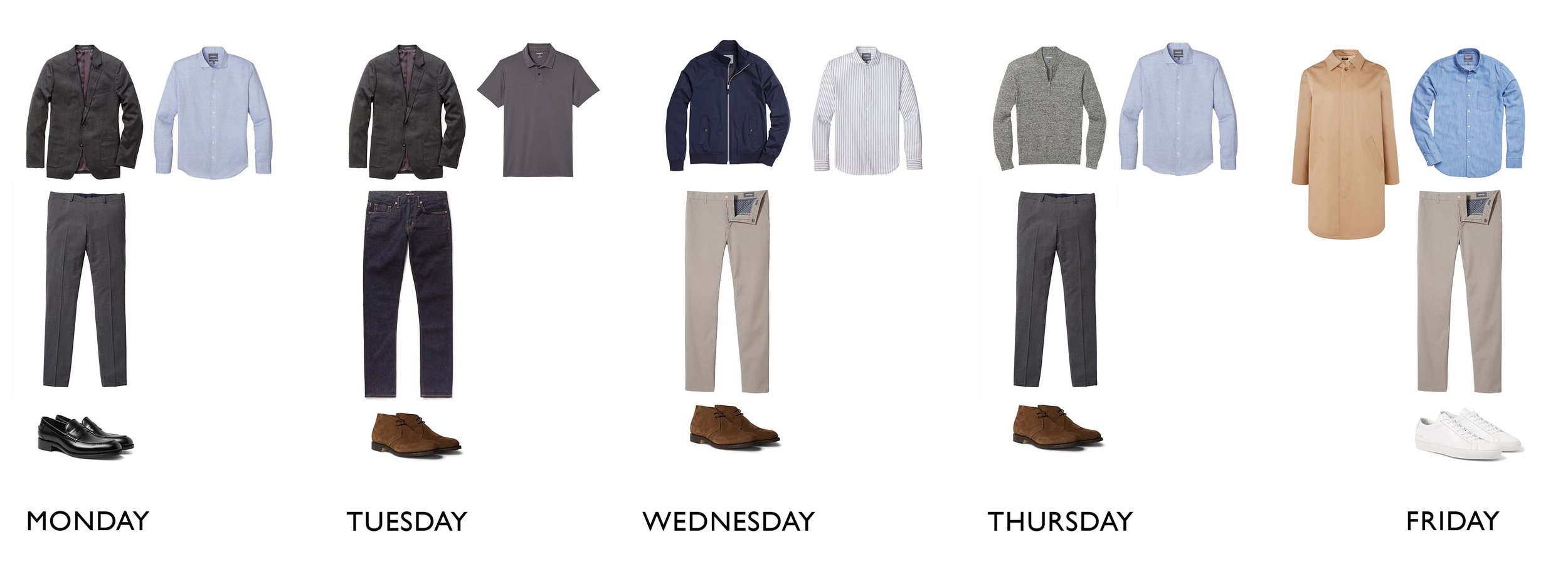
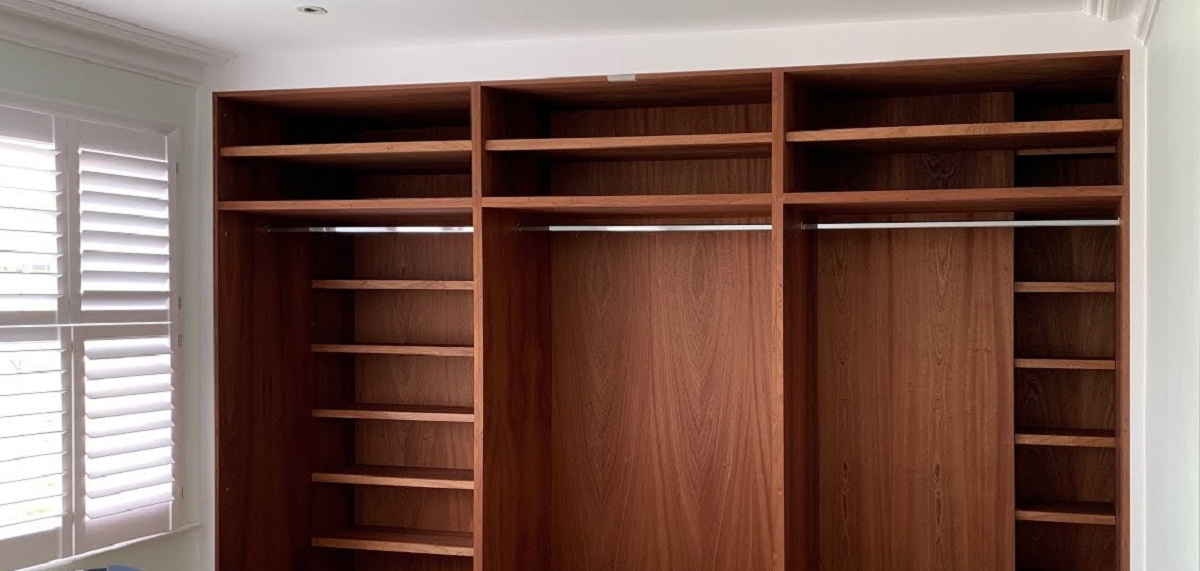
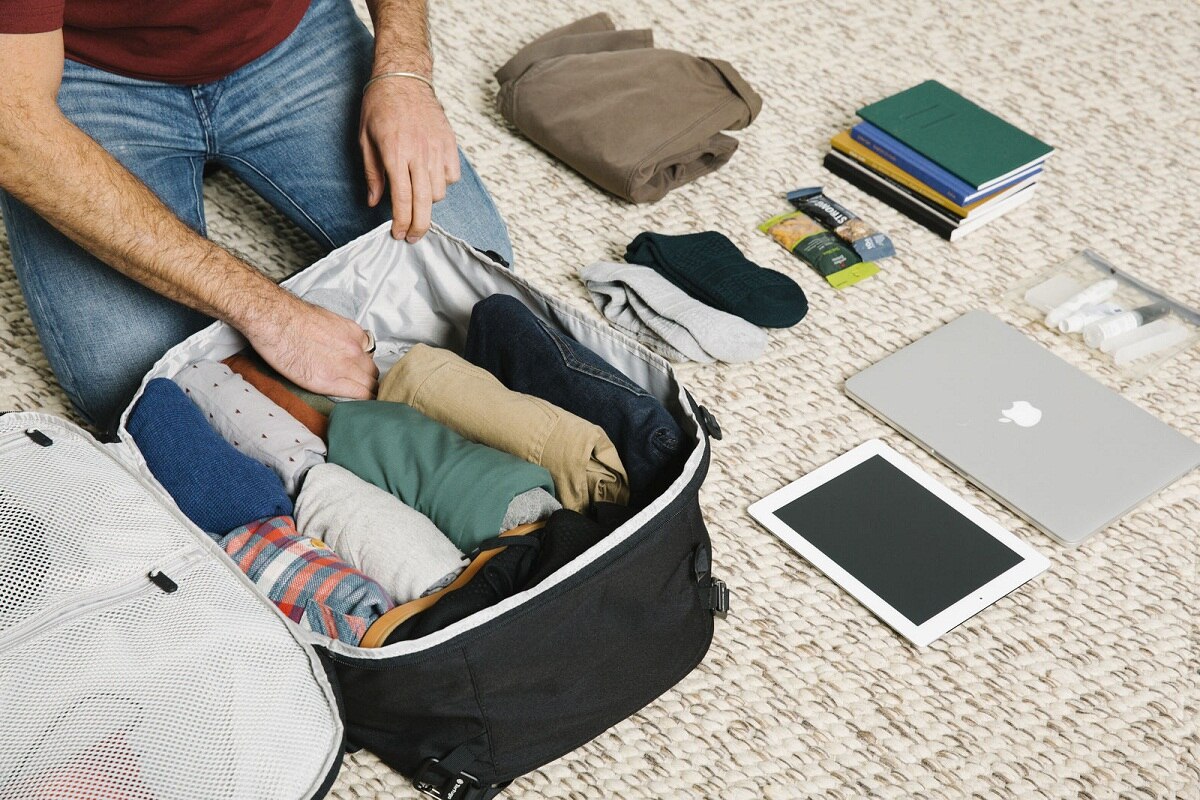
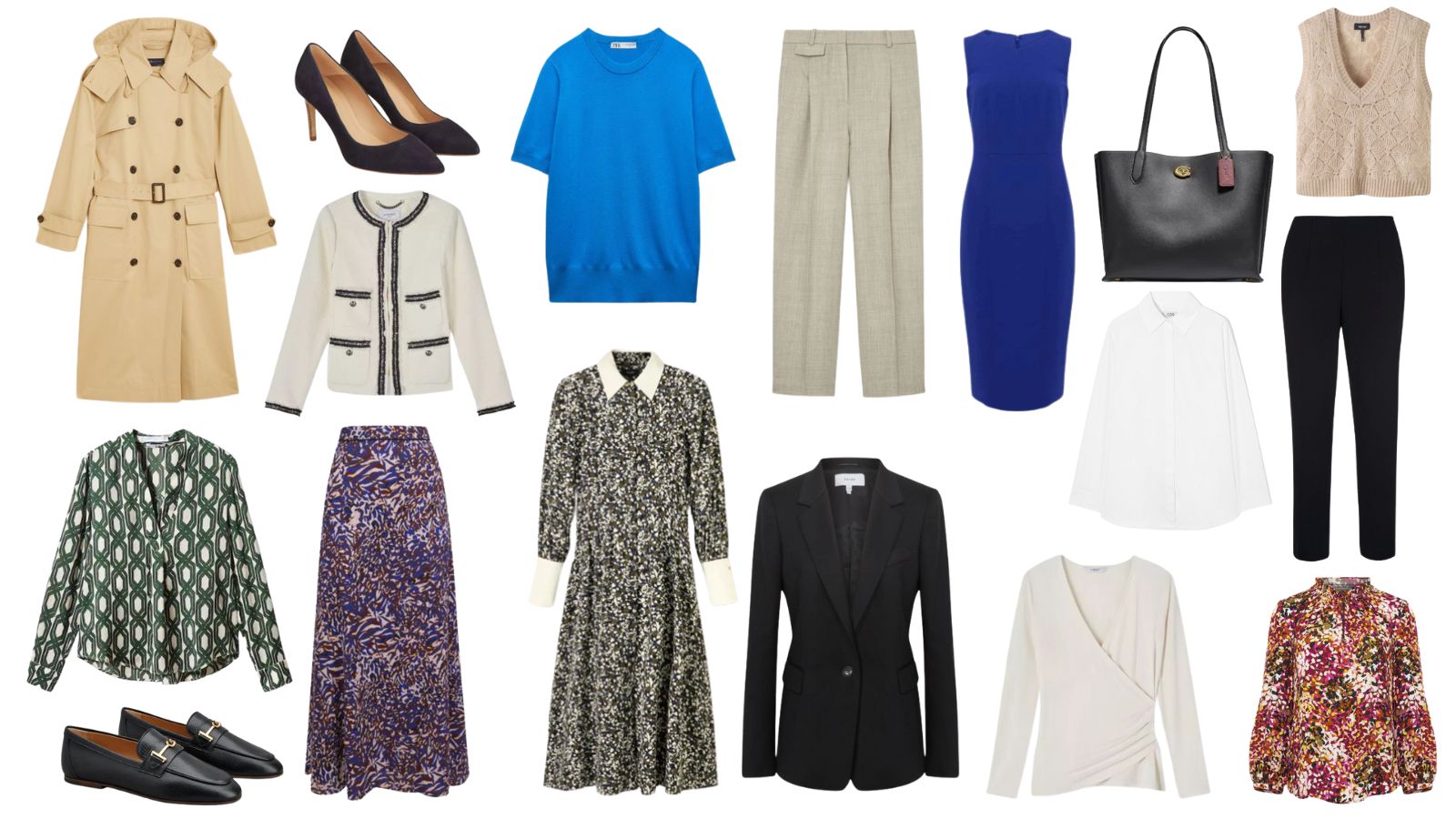
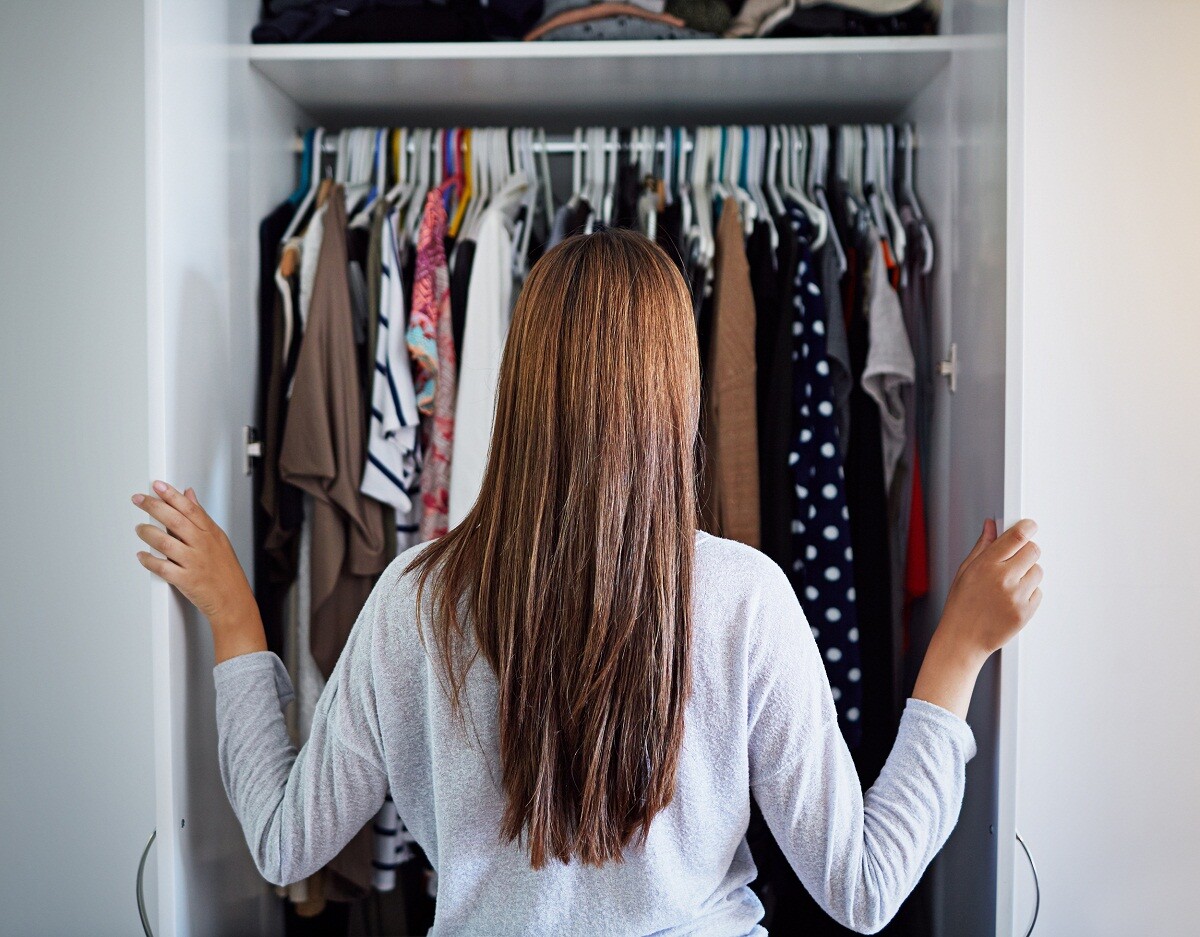

0 thoughts on “How To Build A Wardrobe”